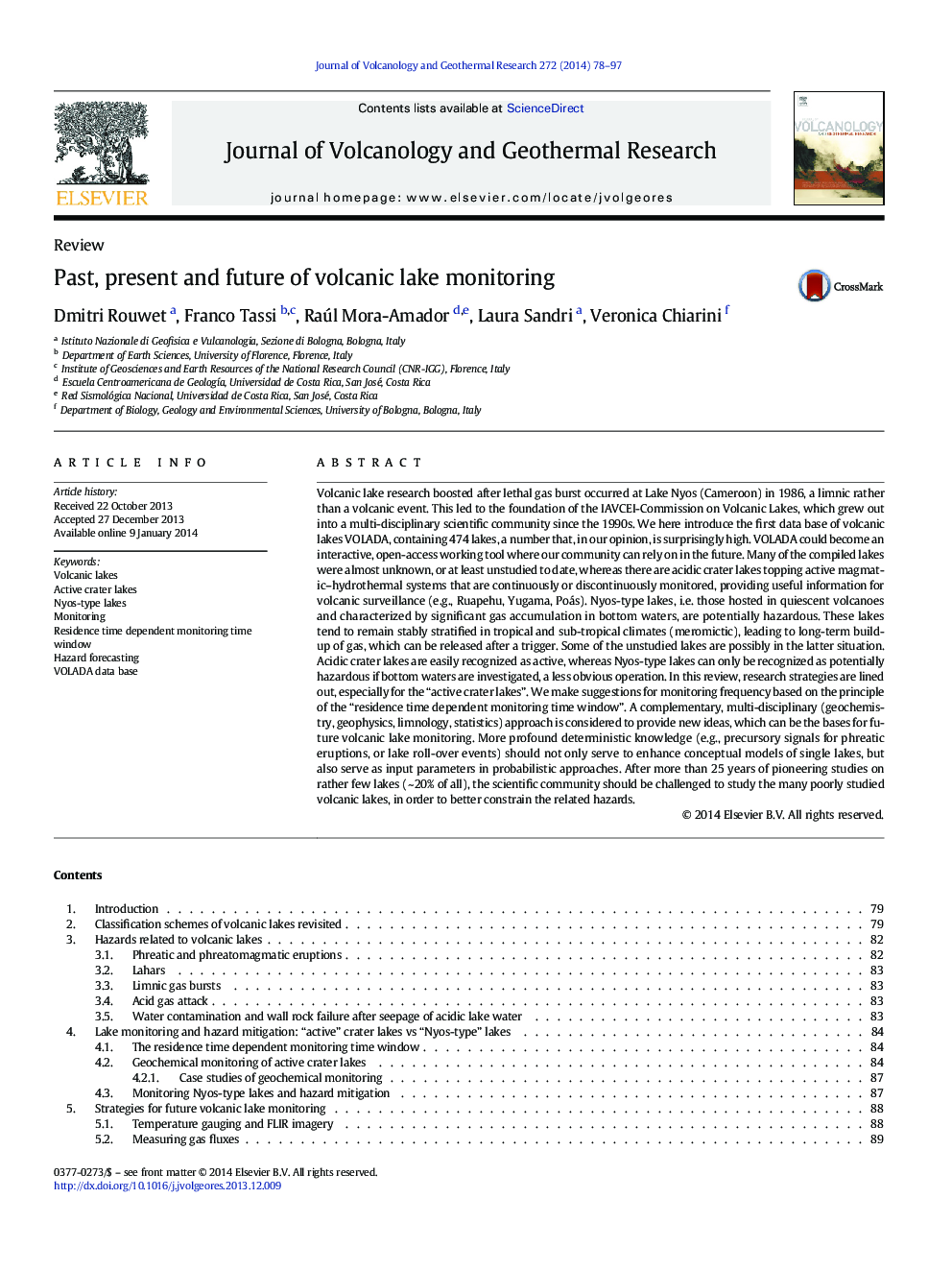| کد مقاله | کد نشریه | سال انتشار | مقاله انگلیسی | نسخه تمام متن |
|---|---|---|---|---|
| 4712413 | 1638349 | 2014 | 20 صفحه PDF | دانلود رایگان |
• State-of-the-art of volcano monitoring using chemical and physical properties of volcanic lakes
• Introduction of the concept of Residence Time Dependent Monitoring Time Window
• Proposals to make lake monitoring safer and more efficient
• Stating the importance of statistical and probabilistic approaches in future lake research
• Introduction of the VOLADA data base on volcanic lakes
Volcanic lake research boosted after lethal gas burst occurred at Lake Nyos (Cameroon) in 1986, a limnic rather than a volcanic event. This led to the foundation of the IAVCEI-Commission on Volcanic Lakes, which grew out into a multi-disciplinary scientific community since the 1990s. We here introduce the first data base of volcanic lakes VOLADA, containing 474 lakes, a number that, in our opinion, is surprisingly high. VOLADA could become an interactive, open-access working tool where our community can rely on in the future. Many of the compiled lakes were almost unknown, or at least unstudied to date, whereas there are acidic crater lakes topping active magmatic–hydrothermal systems that are continuously or discontinuously monitored, providing useful information for volcanic surveillance (e.g., Ruapehu, Yugama, Poás). Nyos-type lakes, i.e. those hosted in quiescent volcanoes and characterized by significant gas accumulation in bottom waters, are potentially hazardous. These lakes tend to remain stably stratified in tropical and sub-tropical climates (meromictic), leading to long-term build-up of gas, which can be released after a trigger. Some of the unstudied lakes are possibly in the latter situation. Acidic crater lakes are easily recognized as active, whereas Nyos-type lakes can only be recognized as potentially hazardous if bottom waters are investigated, a less obvious operation. In this review, research strategies are lined out, especially for the “active crater lakes”. We make suggestions for monitoring frequency based on the principle of the “residence time dependent monitoring time window”. A complementary, multi-disciplinary (geochemistry, geophysics, limnology, statistics) approach is considered to provide new ideas, which can be the bases for future volcanic lake monitoring. More profound deterministic knowledge (e.g., precursory signals for phreatic eruptions, or lake roll-over events) should not only serve to enhance conceptual models of single lakes, but also serve as input parameters in probabilistic approaches. After more than 25 years of pioneering studies on rather few lakes (~ 20% of all), the scientific community should be challenged to study the many poorly studied volcanic lakes, in order to better constrain the related hazards.
Journal: Journal of Volcanology and Geothermal Research - Volume 272, 15 February 2014, Pages 78–97
